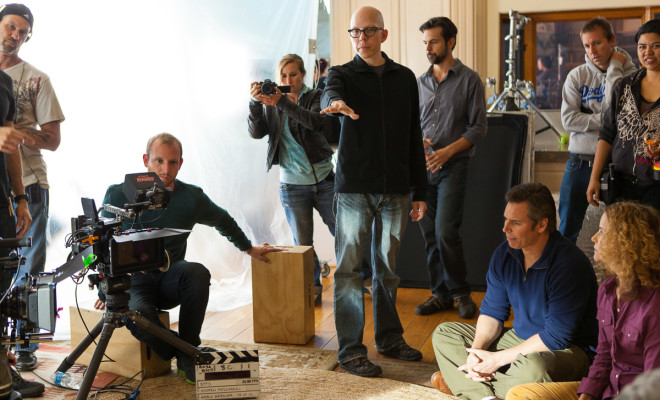
Celebrity Buzz
Filmmakers Getting Independent Movies Made–and Seen
Onscreen: With Wade Gasque, Quentin Lee, Andrew Putschoegl, Marina Rice Bader and Ken Roht
Technology today allows for a single person to shoot, edit and even distribute a film. So how is that impacting what audiences see? I asked a few filmmakers in town for Outfest 2014.
“We’re in such a transition right now,” says filmmaker Wade Gasque (“Tiger Orange”). “There’s a lot of anxiety in Hollywood. Screens are getting smaller, from the movie theater to the TV to the computer to the cellphone. But at the same time, we’ve got Google Glass on the way and these immersive virtual reality technologies right around the corner.”
“I like how the digital video age is democratizing the business of entertainment,” says singer-songwriter Ken Roht, who premiered “Perfect Cowboy” at Outfest, his first feature as an independent writer-producer-director-actor.
“I can’t wait to start building a body of films that are musically based. So far I’ve made a raunchy vampire musical starring a Backstreet Boy [Kevin Richardson], and a film with lots of country western music. I’m thrilled that film is a new passion after so many years of telling musical stories onstage.”
Quentin Lee, director of the award-winning short “Secrets and Toys” and last year’s “White Frog,” is raising money through a crowd-funding campaign for an educational film called “Operation Marriage,” starring Mindy Cohn (“The Facts of Life”) and Tamlyn Tomita (“Glee,” “The Joy Luck Club”).
“’Operation Marriage’ cannot be possible without the Internet and digital technology,” says Lee. “It will be a web-based film, and we hope to reach the widest possible audience globally and offer the world the film for free through the Internet.”
Based on a true story from a children’s book by Cynthia Chin-Lee, “Operation Marriage” features Cohn and Tomita as a couple whose children want them to get legally hitched.
“The last film like “Operation Marriage” was ‘Trevor,’ made in 1994,” says the director. “At that time, there wasn’t really Internet distribution.”
For filmmakers with their hearts set on bigger screens, “Festivals are still an exceptional path,” says Andrew Putschoegl, director of “BFFS.” Written by stars Tara Karsian and Andrea Grano, it’s the story of two best friends who pretend they’re a couple so they can attend a weekend retreat. The film premiere at the Santa Barbara International Film Festival, “had three sold-out screenings” says the director. “That experience is something you can’t replicate by counting YouTube views.”
Putschoegl says he’s made “invaluable” connections at Outfest, “talking with a handful of distributors.” But some filmmakers are looking for alternatives to traditional distribution.
Marina Rice Bader, who’s film “Anatomy of a Love Seen” premiered at Outfest, made her film available online the next day, after reading that Joss Whedon did the same thing.
It’s a risky move, because “Joss makes this decision and it’s world-wide news, I make the decision and I have to work my ass off so that everybody knows it’s happening,” says Bader. “I want to get this work out there to the people I created the film for. People in France can watch it same day as people in Los Angeles. Why should they have to wait?”
“I love that it’s become easier than ever to bring one’s work to the world at large through various online platforms,” Putschoegl agrees. “Whether it’s getting distribution that places the film on iTunes and Netflix, or a filmmaker in the middle of nowhere releasing their movie on YouTube for free.
“Digital distribution has made it easier to share content, but it’s also created a much larger haystack in which to find the needles,” says Putschoegl. “One has to be able to tell a compelling story and introduce us to interesting characters, or it doesn’t matter how you release your film.”
Bader, who also produced “Elena Undone” and “A Perfect Ending” through her Soul Kiss Films, believes that the key to success is to remember your audience.
“Someone who makes films for between $50,000 and $200,000, which is micro-budget, you have to have a group of committed fans that you’re making movies for, or how can you even survive?,” she asks.
Putschoegl says opportunities through technology mean that “just about anyone can tell their story on film now.”
“Equipment, camera, and editing software are all within reach of anyone, regardless of budget level. I’ve always argued that you could shoot a feature on VHS, and if what you were saying, and the people who were saying it, were captivating, an audience will want to see it. All of the flash and special effects in the world cannot save a weak story.”
The “Tiger Orange” director seemed to sum up the spirit of independent filmmakers:
“We had a fantastic screening at the Ford Amphitheater,” says Gasque the day after his Outfest experience. “We didn’t wait for permission. We didn’t worry about the shaky distribution landscape. We just went out and made something that we loved. And I’m not sure I could have done that 10 or 15 years ago when cameras and everything else were more expensive and less available.
“So talk to me in a few weeks when I’ve come back down to earth. Right now, I’m gonna ride high on this success. For me, the future of independent filmmaking is good.”
For more on these filmmakers’ recent projects see: http://operationmarriagemovie.org; http://vimeo.com/ondemand/anatomyofaloveseen; Bffsthemovie.com; aperfectcowboy.com, and tigerorangemovie.com.



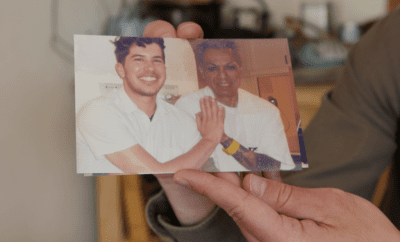
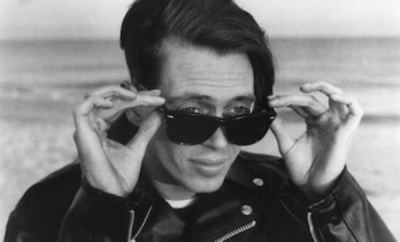
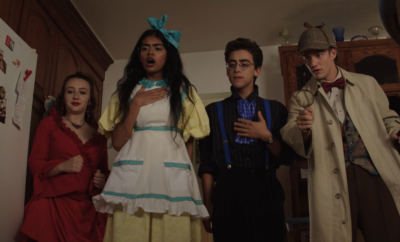



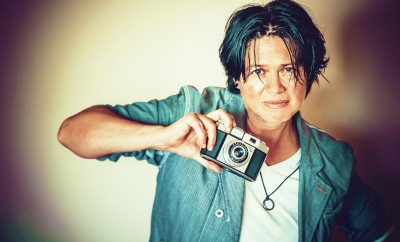
You must be logged in to post a comment Login